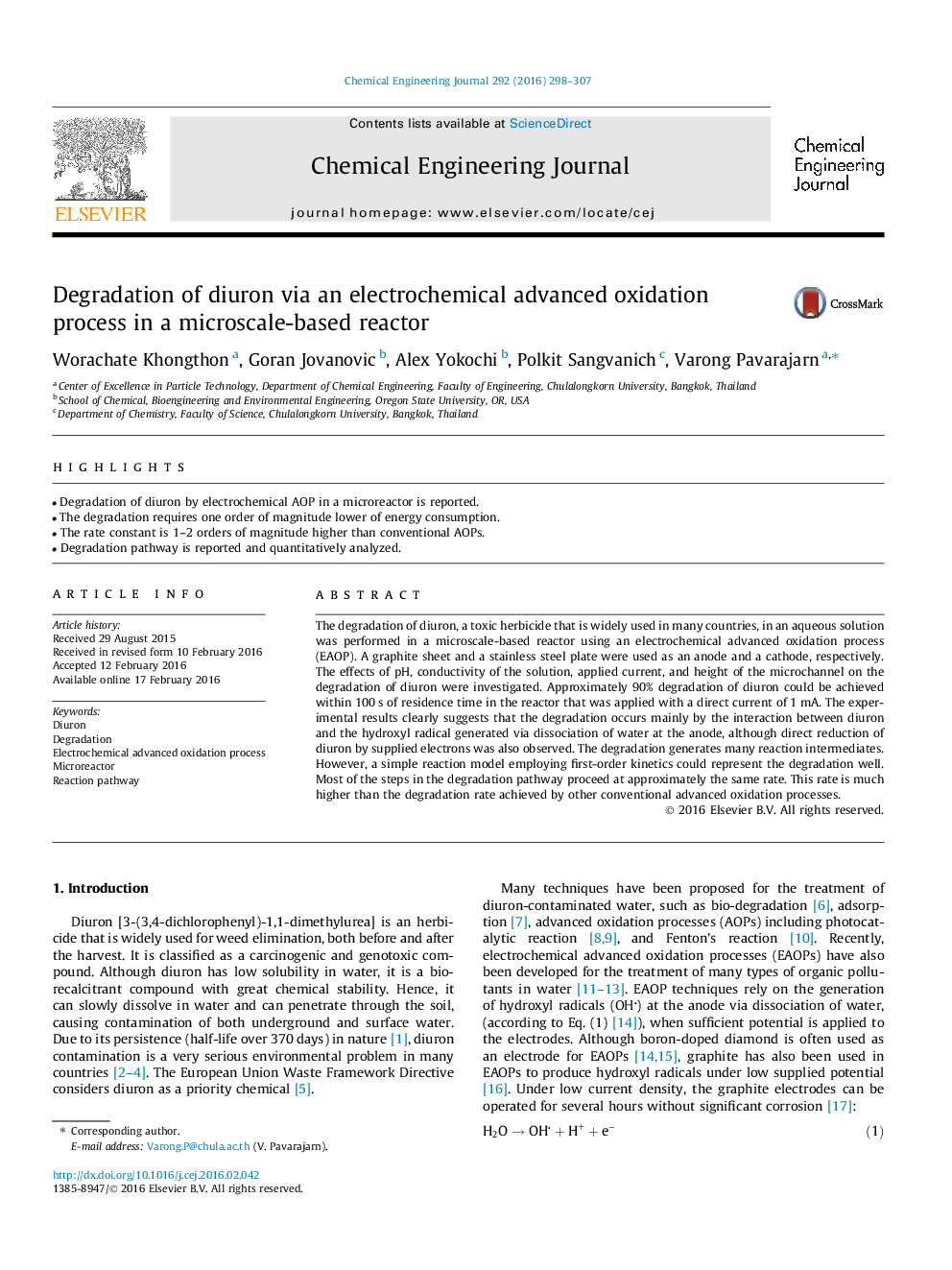| Article ID | Journal | Published Year | Pages | File Type |
|---|---|---|---|---|
| 145671 | Chemical Engineering Journal | 2016 | 10 Pages |
•Degradation of diuron by electrochemical AOP in a microreactor is reported.•The degradation requires one order of magnitude lower of energy consumption.•The rate constant is 1–2 orders of magnitude higher than conventional AOPs.•Degradation pathway is reported and quantitatively analyzed.
The degradation of diuron, a toxic herbicide that is widely used in many countries, in an aqueous solution was performed in a microscale-based reactor using an electrochemical advanced oxidation process (EAOP). A graphite sheet and a stainless steel plate were used as an anode and a cathode, respectively. The effects of pH, conductivity of the solution, applied current, and height of the microchannel on the degradation of diuron were investigated. Approximately 90% degradation of diuron could be achieved within 100 s of residence time in the reactor that was applied with a direct current of 1 mA. The experimental results clearly suggests that the degradation occurs mainly by the interaction between diuron and the hydroxyl radical generated via dissociation of water at the anode, although direct reduction of diuron by supplied electrons was also observed. The degradation generates many reaction intermediates. However, a simple reaction model employing first-order kinetics could represent the degradation well. Most of the steps in the degradation pathway proceed at approximately the same rate. This rate is much higher than the degradation rate achieved by other conventional advanced oxidation processes.
